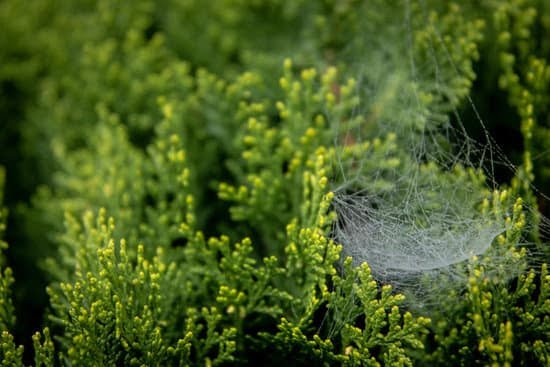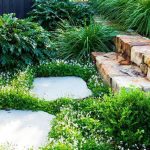Gardening on a hill presents unique challenges and opportunities for landscapers and homeowners. Hill gardening ideas involve creatively using the terrain to create beautiful, functional outdoor spaces. From choosing the right plants to building retaining walls, this article will explore various strategies for successful hill gardening.
One of the primary challenges of hill gardening is managing erosion and maximizing space while still creating an aesthetically pleasing landscape. However, with the right techniques and plant selection, hill gardening can also offer benefits such as improved drainage and eye-catching terraced gardens.
In this section, we will delve into the challenges and benefits of hill gardening, setting the stage for exploring practical tips and techniques to make the most of sloped landscapes. Whether you are an experienced gardener looking for new ideas or a beginner seeking guidance, this article will provide valuable insights into achieving a stunning hill garden.
Choosing the Right Plants for Hill Gardening
When it comes to hill gardening, choosing the right plants is crucial for creating a low-maintenance and beautiful landscape. The steep terrain of a hill can pose challenges such as erosion and limited soil moisture, but there are many plant options that thrive in these conditions.
One of the best options for hill gardening is to choose native plants that are well-adapted to the local climate and soil conditions. Native plants tend to require less maintenance and irrigation once they are established, making them an excellent choice for sloped landscapes. Some popular low-maintenance native plants for hill gardening include yarrow, creeping juniper, and butterfly weed.
In addition to native plants, ground-covering plants are also great choices for hill gardening. These plants help prevent erosion by establishing a dense root system and covering the soil surface. Examples of ground-covering plants suitable for hill gardening include creeping phlox, sedum, and creeping thyme. These plants not only add beauty to your hill garden but also help keep maintenance at a minimum.
When selecting plants for your hill garden, it’s essential to consider the slope’s exposure to sunlight and wind. Plants placed on different parts of the slope may experience varying conditions, so it’s important to choose species that can thrive in those specific microclimates. By choosing the right low-maintenance plants tailored to your landscape’s needs, you can create a stunning hill garden with minimal upkeep.
| Low-Maintenance Plant Options | Examples |
|---|---|
| Native Plants | Yarrow, Creeping Juniper, Butterfly Weed |
| Ground-Covering Plants | Creeping Phlox, Sedum, Creeping Thyme |
Creating Terraced Gardens
When faced with gardening on a hill, one of the most effective ways to make the best use of space and prevent soil erosion is by creating terraced gardens. Terracing involves building a series of flat areas or platforms at different levels on the slope, effectively transforming a challenging incline into usable garden beds. Here are some ideas for creating terraced gardens on your hillside:
- Start by carefully planning the layout of your terraces, taking into account the natural contours of the hill and ensuring that each terrace is level to prevent soil runoff. Consider using landscaping software or consulting with a professional to help design your terraced garden.
- Once you have planned your terraces, begin building retaining walls to hold back the soil on each level. Retaining walls can be made from a variety of materials, including stone, timber, or concrete blocks. Choose a material that complements the natural landscape and provides sufficient support for your terraces.
- Select plants that are well-suited for terraced gardens and will help minimize erosion. Groundcover plants, such as creeping thyme or sedum, can be planted between retaining walls to stabilize the soil and add visual interest. Additionally, consider incorporating native plants that have deep root systems to help anchor the soil on each terrace.
By creating terraced gardens on your hillside, you can optimize space for planting while also preventing soil erosion. With careful planning and construction, terracing allows you to transform an otherwise challenging landscape into a beautiful and functional garden that showcases your hill gardening ideas in all their splendor.
Building Retaining Walls and Steps
When gardening on a hill, one of the most practical and aesthetic considerations is building retaining walls and steps. These structures not only help prevent soil erosion but also add visual interest and accessibility to your sloped landscape. Here are some practical tips for creating retaining walls and steps in your hill garden:
1. Plan the Layout: Before you start building, carefully plan the layout of your retaining walls and steps. Consider the natural slope of the land, drainage issues, and how you want the garden to flow. This will help you determine where to place these structures for maximum effectiveness.
2. Choose the Right Materials: When it comes to building retaining walls and steps, there are various materials to choose from, such as stone, concrete blocks, or timber. Consider the overall look of your garden and choose materials that complement the existing landscape.
3. Consider Aesthetics: Retaining walls and steps can be more than just functional – they can also add beauty to your hill garden. Incorporate planters into the design of your retaining walls or choose materials that blend seamlessly with your chosen hill gardening ideas theme.
4. Safety First: When creating steps in your hill garden, safety should be a top priority. Ensure that each step is even and easy to navigate, especially if you or others will be walking up or down them regularly.
Incorporating retaining walls and steps into your hill garden not only helps prevent soil erosion but also adds structure, accessibility, and visual interest to your sloped landscape. By carefully planning the layout, choosing appropriate materials, considering aesthetics, and prioritizing safety, you can create practical yet beautiful additions to your hill garden.
Utilizing Pots and Containers
Choosing the Right Containers
When it comes to hill gardening, utilizing pots and containers can be a great way to add vertical interest to sloped landscapes. However, it’s important to choose the right containers for this type of terrain. Look for pots and containers that have a stable base and are not easily tipped over by wind or water runoff. Additionally, consider lightweight options if you’ll need to move the containers around for maintenance or plant care.
Strategic Placement of Containers
One of the key hill gardening ideas when using pots and containers is strategic placement. Consider placing larger containers at the top of the slope and gradually decreasing the size of the pots as you move down the hill. This creates a visually appealing cascading effect and helps prevent soil erosion by slowing down water runoff. In addition, placing containers strategically can also help create natural focal points within your hill garden.
Choosing Suitable Plants
When utilizing pots and containers in hill gardening, it’s essential to choose plants that are suitable for this type of environment. Look for varieties that thrive in well-drained soil and don’t mind a bit of a slope. Additionally, consider plants with trailing or cascading growth habits to enhance the vertical interest in your sloped landscape. By carefully selecting suitable plants for your containers, you can create a stunning hill garden that is both beautiful and low-maintenance.
Incorporating Water Features
When it comes to hill gardening ideas, incorporating water features can be a game-changer for your landscape. Not only do water features add beauty and tranquility to your garden, but they can also help solve drainage issues that are common with sloped landscapes. Whether it’s a small pond, a cascading waterfall, or a meandering stream, water features can transform a challenging hillside into a stunning focal point in your outdoor space.
One of the main benefits of incorporating water features in hill gardening is their ability to help manage runoff and erosion. By strategically placing ponds or streams, you can redirect excess water away from vulnerable areas of your garden. This not only prevents soil erosion but also helps maintain the stability of your hillside landscape. Additionally, the soothing sound of running water can create a relaxing ambiance while masking any noise from nearby streets or neighbors.
In terms of design, integrating water features into a sloped garden allows for endless creativity and possibilities. You can combine different elements such as rocks, plants, and lighting to create a unique and visually appealing setting. Moreover, the presence of water attracts wildlife such as birds and butterflies, adding another layer of natural beauty to your hill garden.
| Benefits | Considerations |
|---|---|
| Aids in managing runoff and erosion | Regular maintenance required |
| Creates a tranquil ambiance and masks noise | May require professional installation |
| Provides endless creative design possibilities | Attracts wildlife to the garden |
Selecting the Right Tools and Equipment
When it comes to hill gardening, having the right tools and equipment can make a world of difference in maintaining and beautifying your landscape. From taming unruly slopes to enhancing the natural beauty of the terrain, the right gear can help you achieve your gardening goals with ease. Here are some essential tools and equipment for hill gardening.
Hand Tools
In hill gardening, hand tools are essential for maintaining smaller, hard-to-reach areas on the slope. Invest in sturdy hand trowels, pruners, and loppers for precise trimming and pruning. A pair of high-quality gloves will also protect your hands during gardening tasks on uneven terrain.
Lightweight Power Equipment
For larger areas or steeper slopes, lightweight power equipment such as battery-operated hedge trimmers and chainsaws can make maintenance much easier. These tools provide the necessary power without being too heavy or cumbersome to handle on sloped landscapes.
Erosion Control Materials
To combat erosion on hilly terrain, consider using erosion control materials such as geotextiles or erosion control blankets. These materials help stabilize soil and prevent it from washing away during heavy rains, preserving the integrity of your hill garden.
Investing in these essential tools and equipment for hill gardening will not only make maintenance easier but also allow you to fully embrace the beauty of your sloped landscape without feeling overwhelmed by the challenges it may present. With a well-equipped toolkit, you’ll be more prepared to tackle any project on your hill garden with confidence and ease.
Maintenance Tips
Maintaining a hill garden can be a challenge, but with the right tips and techniques, you can keep your garden looking beautiful all year round. One important maintenance tip for hill gardening is to regularly check for soil erosion.
Heavy rain or watering can cause soil to wash away on sloped landscapes, so it’s essential to keep an eye on this issue. To prevent erosion, consider adding ground cover plants or mulch to help hold the soil in place and retain moisture.
Another key maintenance tip for hill gardening is to prune regularly. Overgrown vegetation can obstruct views and pathways, as well as contribute to erosion issues. Regular pruning will also help promote healthy growth and flowering in your plants. Additionally, be sure to install proper drainage systems to prevent water from accumulating on your hill garden, which could lead to flooding and other issues.
Finally, one of the most important maintenance tips for hill gardening is to stay on top of weeding. Weeds can quickly take over a hill garden, especially if left unchecked due to the lack of easy access on sloped landscapes. Investing in a good pair of gardening gloves and a hand weeder will make it easier to tackle weeds without damaging your plants or disturbing the soil.
By staying vigilant with these maintenance tips and techniques, you can ensure that your hill garden remains a stunning focal point all year round. Remember that regular upkeep is key when it comes to hill gardening ideas.
Conclusion
In conclusion, hill gardening presents a unique set of challenges and rewards for gardeners. The beauty of creating a lush, thriving garden on a slope is unparalleled, but it requires careful planning and maintenance to achieve success.
By choosing the right plants, creating terraced gardens, building retaining walls and steps, utilizing pots and containers, incorporating water features, and selecting the right tools and equipment, you can overcome the challenges of hill gardening and create a stunning landscape that adds value to your property.
When embracing hill gardening ideas, it’s important to consider the environmental benefits as well. Terraced gardens help minimize erosion while adding visual interest to your landscape. Water features not only add beauty but also help solve drainage issues. Additionally, choosing low-maintenance plants can reduce the need for excessive watering and upkeep.
Incorporating hill gardening ideas into your landscaping not only enhances the aesthetic appeal of your property but also allows you to make the most of a challenging terrain. By following the tips outlined in this guide and staying consistent with maintenance efforts, you can enjoy a beautiful hill garden all year round. With careful planning and dedication, anyone can transform their sloped landscape into an eye-catching oasis of natural beauty.
Frequently Asked Questions
How to Cheaply Landscape a Steep Hill?
Landscaping a steep hill on a budget can be challenging, but there are cost-effective options. Consider using ground cover plants to reduce erosion, creating terraced gardens with retaining walls, and using mulch or gravel for low-maintenance ground cover.
How Do You Plan a Hillside Garden?
Planning a hillside garden requires careful consideration of the terrain and soil conditions. Start by assessing the slope’s drainage, sunlight exposure, and potential erosion issues. Then, create a design that incorporates retaining walls, stepped terraces, and appropriate plant choices to maximize the space and prevent soil erosion.
What Is the Best Plant to Plant on a Slope?
When planting on a slope, it’s important to choose plants that have strong root systems and can help prevent soil erosion. Ground cover plants such as creeping juniper or periwinkle are excellent choices as they spread quickly and densely to stabilize the soil.
Additionally, ornamental grasses like feather reed grass or switchgrass are also great options for their deep roots and ability to hold soil in place.

Welcome to my gardening blog! I am passionate about plants and enjoy sharing my knowledge and experiences with others. In this blog, I will write about everything related to gardening, from tips on how to get started to updates on my own garden projects.





